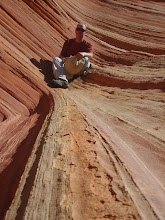The Fukushima Fifty operators believe they may die from radiation exposure. Pray for them, and thank God for keeping them loyally on the job. Their efforts have kept the disaster from growing to a catastrophe.
And, child doses, even to the thyroid, is minimal. 900 infants were tested and are OK. My apology for optimism below, may have been premature. http://www.jaif.or.jp/english/aij/member/2011/earthquakereport41.pdf
The United States Department of Energy has flown over the Fukushima area and recorded the radiation. http://blog.energy.gov/content/situation-japan
Maximum doses outside the plant are less than 0.03 Rem per hour. That means 100 hours would get people 3 Rem, or 1000 hours would give 30 Rem.
30 Rem is where doctor's can test the blood, and find minor changes. Below that level, there are no short-term effects.
The radiation has dropped by a factor of ten in two days. Unless something major happens, the people will not ... repeat, not, get more that 30 Rem. No short-term effects.
That leaves cancer and other major illnesses.
The total release cannot be accurately estimated - yet. Japan and the utility, TEPCO, have not released enough information.
Nuclear reactors have several layers of defense against a release. The innermost one is the fuel itself. It is hard to melt this ceramic fuel. Second is a primary cooling system, with steel walls. Third that is a containment building, with steel lining and reinforced concrete strength. Fourth is a reactor building, which protects the containment.
But, the fuel and primary coolant system of three plants (1,2,3) are severely damaged or melted (and re-frozen). The containments of all three are functional, although one is damaged. Radiation within the fuel has decayed so much that it is highly unlikely that any containment will be further damaged. This means that the reactor fuel will stay in the reactors - all but about 1 percent, which has already been released. Plants one and three had hydrogen explosions outside the containment, but inside the reactor building.
And, the fuel in one spent nuclear fuel pool - for unit 4 - has been damaged and probably melted. This is the unit which had a hydrogen explosion, and it apparently happened while the fuel was melted. How could it melt? The best judgement on this side of the Pacific is, this spent fuel pool either splashed nearly dry during the Richter 9 earthquake, or more likely, it leaked due to the quake.
This hydrogen explosion drove fuel outside the nuclear plant, and may explain the hot spots of radiation scattered over two prefectures. If people stay away from these hot spots, they should be OK.
The rest of the reactors are reasonably safe.
Thanks to God and the loyalty of the Fukushima Fifty.
Sunday, April 3, 2011
Subscribe to:
Post Comments (Atom)

No comments:
Post a Comment